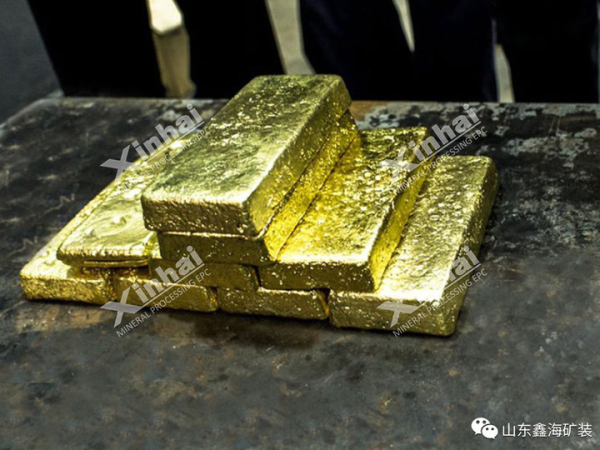Antimony in gold ore will have an adverse effect on the gold leaching rate, so pretreatment is required to remove antimony. Antimony is mostly formed in high, medium and low temperature hydrothermal deposits of acidic magmatic rocks, and is often associated with elements such as arsenic and sulfur. The gold in antimony-containing gold ore is mainly fine-grained or sub-microscopically encapsulated or impregnated in sulfide ores such as stibnite, arsenopyrite and pyrite, resulting in poor oxidation leaching of gold. These sulfide ores will also react with the leachate, reducing the oxidation and cyanidation efficiency of the leachate and reducing the gold recovery rate.

During the cyanide gold extraction process, stibnite will react with NaOH, which will not only consume cyanide and oxygen, but also the generated NaCNS will cover the surface of the ore, resulting in the inability of gold to fully contact with O₂ and CN⁻, thereby affecting the gold leaching rate. Therefore, antimony-containing gold concentrate needs to be pretreated to improve the gold leaching rate.
When the antimony grade in the original ore is low and has no recycling value or gold is contained in antimony minerals, it is difficult to eliminate the influence of antimony by flotation. In order to improve the cyanide leaching environment of antimony-containing gold ore, physical or chemical means can be used for pretreatment before leaching to achieve efficient leaching of gold. Common pretreatment methods for antimony-gold ore mainly include roasting and chemical alkaline leaching.
1. Roasting method
Roasting is a common method for oxidative pretreatment of antimony-containing gold ore. Roasting changes the physical structure of the ore to produce loose and porous roasted sand. At the same time, stibnite is converted into antimony-containing oxide in an oxidizing high-temperature atmosphere, thereby eliminating the adverse effects of encapsulation and stibnite. The roasting method of antimony-containing gold ore has a high leaching rate and mature technology, but its co-existing minerals such as arsenic and sulfur will cause environmental pollution problems and need to be reprocessed, with high energy and electricity consumption.

2. Chemical alkaline leaching method
Chemical alkaline leaching method is mostly used to treat gold-antimony ore with stibnite as the main gold-bearing mineral. This method uses the characteristics of antimony minerals that can be well dissolved in alkali or sodium sulfide to remove products such as antimony in advance through water washing, avoiding the occurrence of cyanide and oxygen consumption reactions during subsequent cyanide leaching, and significantly weakening the secondary coverage of products such as NaCNS. Compared with the roasting method, the cyanide leaching rate of the chemical alkaline leaching method will be reduced, but it has a fast reaction, short cycle, less pollution, and low cost, but it has certain application limitations.
For example, in an alkaline pretreatment-pressure oxidation-cyanide gold extraction test of a certain antimony-containing difficult-to-treat gold concentrate, the antimony-containing gold concentrate was pretreated with alkali, and the antimony removal rate was 95% under the conditions of fineness -0.045mm>80%, NaOH 50g/L, leaching time 3h, leaching temperature 90℃, and liquid-solid ratio 4:1.
3. Hydrochloric acid aqueous solution plus hydrogen peroxide method
The hydrochloric acid aqueous solution plus hydrogen peroxide method provides a new and efficient process for removing antimony and lead from gold concentrate. The specific operation is as follows: immerse the sulfide gold concentrate in the hydrochloric acid aqueous solution, start stirring, and add hydrogen peroxide. During the process of adding hydrogen peroxide, the potential of the solution system must be strictly controlled between 350 and 390mV. Stop adding hydrogen peroxide after the potential of the solution system stabilizes, and continue stirring for more than 1 hour. After the reaction is completed, filtering, acid washing, water washing and other steps are carried out to finally obtain the sulfide gold concentrate with antimony and lead removed.